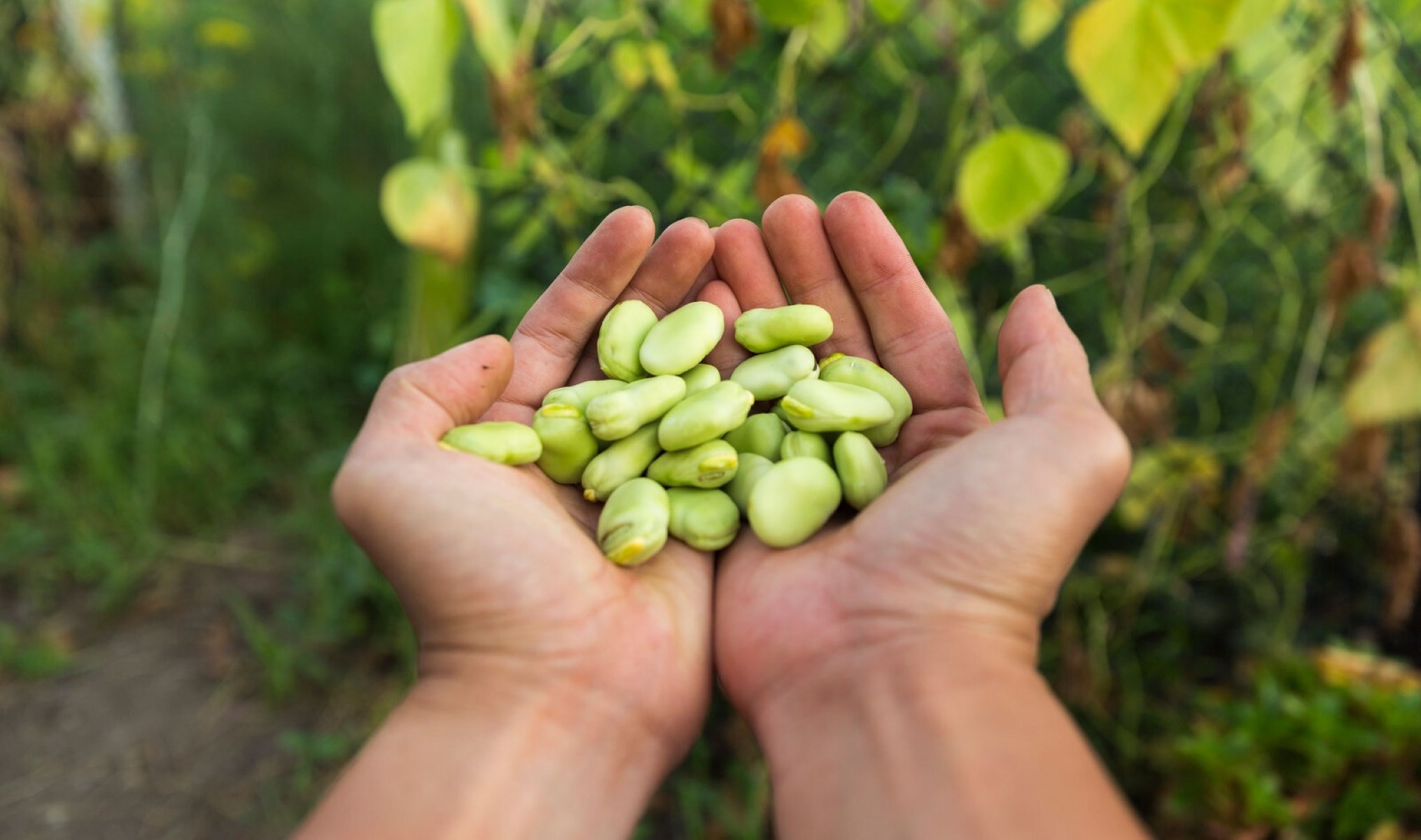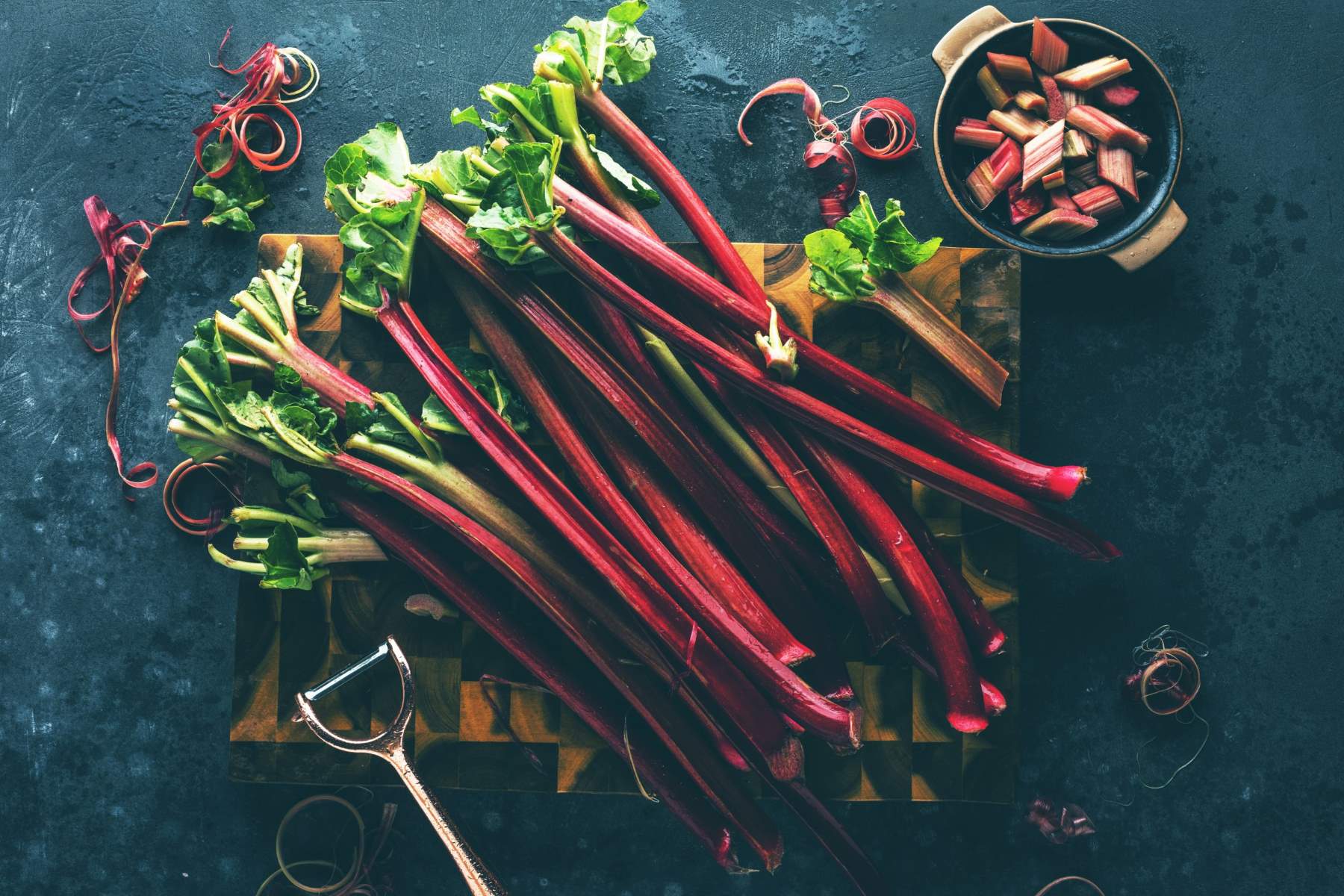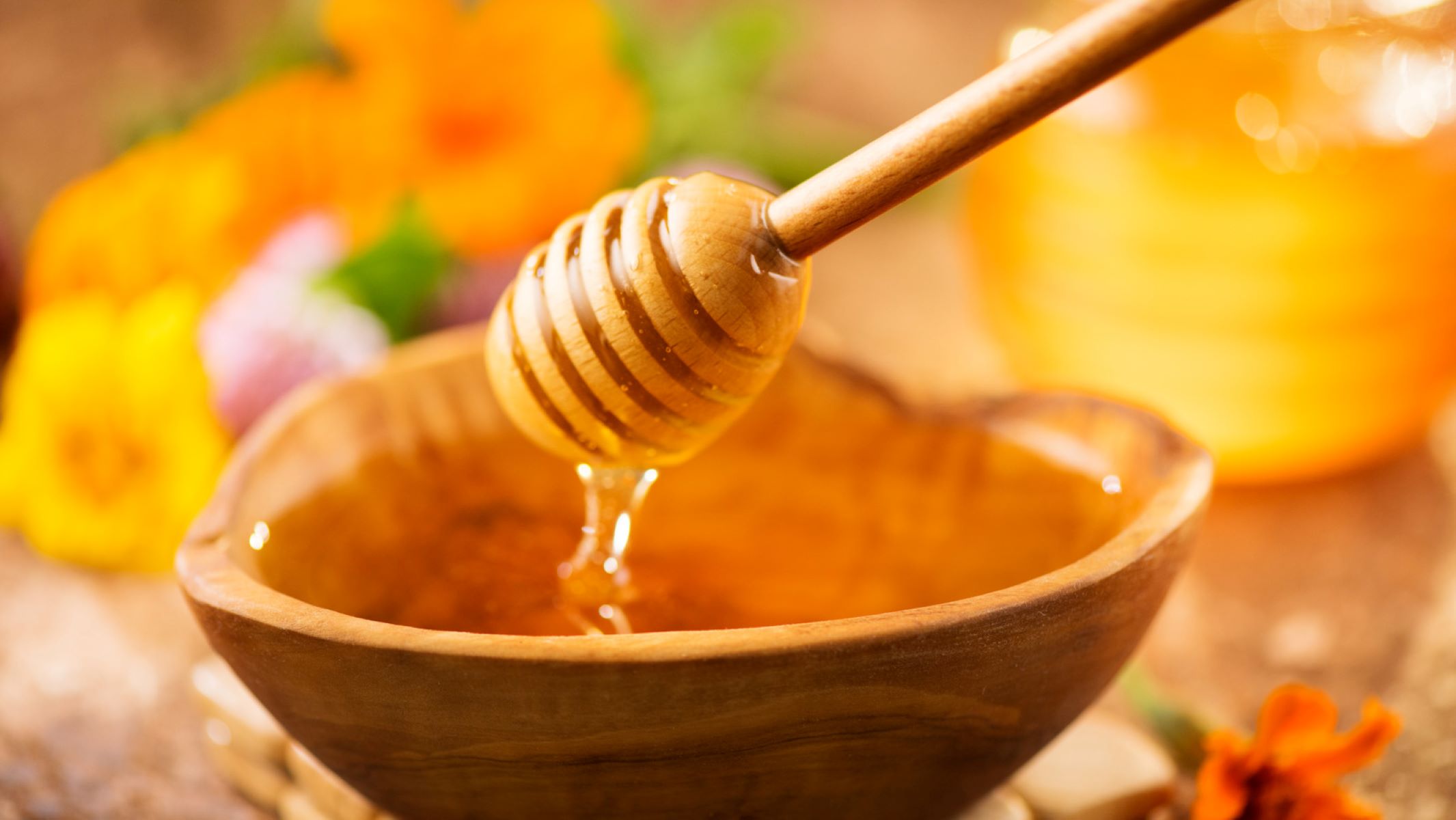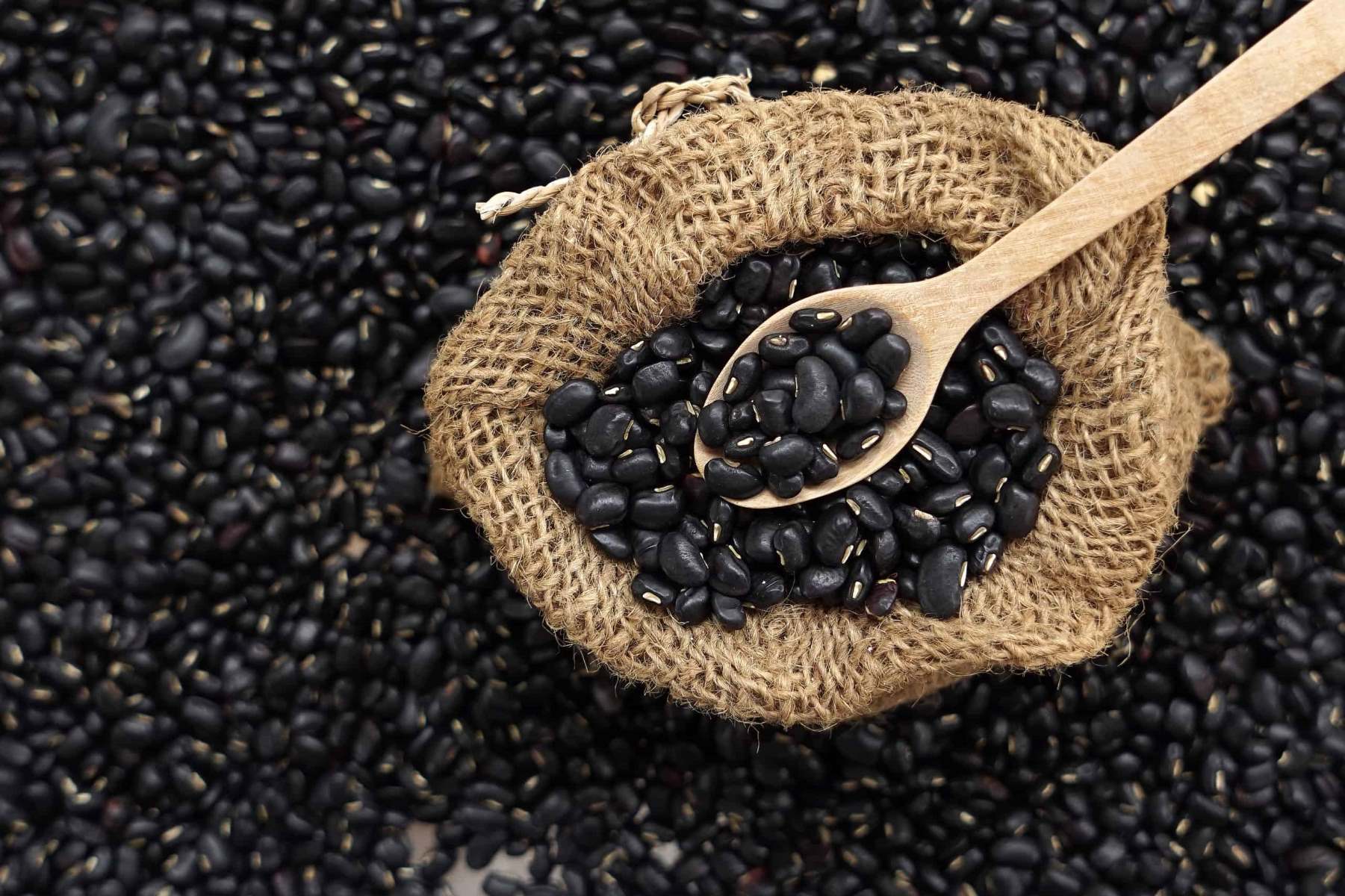Home>Food and Cooking>5 Delicious Alternatives To Lima Beans


Food and Cooking
5 Delicious Alternatives To Lima Beans
Published: January 25, 2024
Discover 5 tasty Lima bean alternatives for your next culinary adventure. From soups to salads, explore new flavors and cooking techniques. #FoodandCooking #DeliciousRecipes
(Many of the links in this article redirect to a specific reviewed product. Your purchase of these products through affiliate links helps to generate commission for Regretless.com, at no extra cost. Learn more)
Table of Contents
Introduction
Lima beans, also known as butter beans, are a popular legume that has been a staple in many cuisines for centuries. With their creamy texture and mild flavor, they have found their way into a variety of dishes, from soups and stews to salads and casseroles. However, while some people enjoy the unique taste and texture of lima beans, others may be looking for delicious alternatives to incorporate into their meals.
Fortunately, there are several versatile and flavorful alternatives to lima beans that can add a delightful twist to your recipes. Whether you're seeking a protein-packed option or a different taste and texture, these alternatives offer a range of culinary possibilities. From the nutty flavor of chickpeas to the rich and earthy taste of black beans, each alternative brings its own unique characteristics to the table.
In this article, we'll explore five delectable alternatives to lima beans that can elevate your culinary creations. Whether you're a seasoned cook looking to experiment with new ingredients or someone seeking to expand their palate, these alternatives are sure to inspire creativity in the kitchen. So, let's embark on a flavorful journey and discover the enticing world of chickpeas, black beans, edamame, lentils, and kidney beans as delectable substitutes for lima beans!
Chickpeas
Chickpeas, also known as garbanzo beans, are a beloved legume that has been a culinary staple in various cultures for thousands of years. These versatile legumes are renowned for their nutty flavor and firm texture, making them an excellent alternative to lima beans in a wide array of dishes.
One of the most popular ways to enjoy chickpeas is in the form of hummus, a creamy and flavorful spread that has gained global popularity. Whether used as a dip for fresh vegetables or as a spread for sandwiches and wraps, hummus offers a delightful way to savor the distinct taste of chickpeas. Additionally, chickpeas can be roasted and seasoned with various spices to create a crunchy and satisfying snack.
In savory dishes, chickpeas shine in curries, stews, and salads, adding a hearty and protein-rich element to the meal. Their ability to absorb flavors makes them an ideal ingredient for creating robust and satisfying dishes. Furthermore, when mashed, chickpeas can be used as a binding agent in vegetarian patties and burgers, providing a wholesome and nutritious alternative to meat-based options.
For those with a sweet tooth, chickpeas can also be utilized in baking to create delectable treats such as chickpea blondies and cookies. Their mild flavor and creamy texture make them a versatile addition to a variety of sweet recipes, offering a unique twist to traditional desserts.
From their rich nutritional profile, including high protein and fiber content, to their culinary adaptability, chickpeas are a fantastic alternative to lima beans. Whether incorporated into classic recipes or used as a creative ingredient in innovative dishes, chickpeas bring a delightful and wholesome element to the table, making them a must-try substitute for lima beans.
Black Beans
Black beans, also known as turtle beans, are a versatile and nutritious legume that has been a staple in Latin American, Caribbean, and Southwestern cuisines for centuries. Their deep, earthy flavor and creamy texture make them an excellent alternative to lima beans in a wide range of culinary applications.
One of the most popular ways to enjoy black beans is in hearty soups and stews, where their robust flavor adds depth and richness to the dish. Whether incorporated into a spicy black bean soup or a flavorful bean chili, black beans bring a satisfying and comforting element to these classic recipes. Additionally, their ability to hold their shape during cooking makes them an ideal ingredient for creating wholesome and filling main courses.
In addition to savory dishes, black beans can be used in a variety of creative and vibrant salads, adding a protein-packed component and a delightful contrast in texture. Whether combined with fresh vegetables, herbs, and a zesty vinaigrette or paired with grains such as quinoa or rice, black beans contribute a satisfying and nutritious element to salads, making them a versatile addition to any meal.
Furthermore, black beans can be transformed into flavorful and hearty bean burgers, providing a plant-based alternative that is both delicious and nutritious. When mashed and combined with aromatic spices and herbs, black beans create a satisfying patty that can be grilled or pan-seared to perfection, offering a wholesome and flavorful substitute for traditional meat-based burgers.
From a nutritional standpoint, black beans are a powerhouse of essential nutrients, including protein, fiber, and various vitamins and minerals. Their high fiber content makes them beneficial for digestive health, while their protein content contributes to a feeling of fullness and satiety. Additionally, black beans are a rich source of antioxidants and plant compounds, making them a valuable addition to a balanced and healthful diet.
Whether used in traditional Latin American dishes, innovative plant-based recipes, or colorful and vibrant salads, black beans offer a delightful alternative to lima beans. Their versatility, nutritional benefits, and rich flavor make them a compelling choice for anyone seeking to explore new culinary horizons and incorporate wholesome and flavorful ingredients into their meals.
Edamame
Edamame, young soybeans harvested at the peak of their sweetness, are a delightful and nutritious alternative to lima beans. Originating from East Asia, edamame has been a cherished ingredient in Japanese, Chinese, and Korean cuisines for centuries. These vibrant green pods encase tender and flavorful soybeans, offering a unique culinary experience that is both nourishing and delicious.
One of the most popular ways to enjoy edamame is by simply steaming or boiling the pods and seasoning them with a sprinkle of sea salt. This straightforward preparation method allows the natural sweetness and vibrant flavor of the soybeans to shine, creating a delightful and satisfying snack or appetizer. The act of popping the beans out of their pods adds an element of interactive enjoyment to the dining experience, making edamame a fun and engaging addition to any meal.
In addition to being enjoyed as a standalone snack, edamame can be incorporated into a variety of dishes, adding a pop of color and a nutritious boost to the recipe. From vibrant stir-fries and nourishing grain bowls to flavorful salads and hearty soups, edamame brings a satisfying texture and a mild, nutty flavor to the table. Their versatility allows them to seamlessly blend with a wide array of ingredients, contributing a protein-rich and wholesome element to the dish.
Furthermore, edamame can be pureed into a creamy and vibrant hummus, offering a unique twist on the classic chickpea-based spread. Blended with garlic, lemon juice, and a touch of tahini, edamame hummus provides a velvety and flavorful dip that pairs beautifully with fresh vegetables, pita bread, or as a spread for sandwiches and wraps. This innovative use of edamame showcases its adaptability and culinary potential, adding a delightful touch of creativity to the dining experience.
From a nutritional standpoint, edamame is a powerhouse of essential nutrients, including protein, fiber, and various vitamins and minerals. Their high protein content makes them a valuable addition to vegetarian and plant-based diets, offering a wholesome source of plant protein. Additionally, edamame is rich in antioxidants and phytonutrients, contributing to its potential health benefits and making it a valuable ingredient for promoting overall well-being.
Whether enjoyed as a simple and satisfying snack, incorporated into vibrant and flavorful dishes, or utilized in innovative recipes, edamame offers a delightful alternative to lima beans. With its vibrant color, satisfying texture, and rich nutritional profile, edamame adds a touch of vibrancy and nourishment to any culinary creation, making it a compelling choice for those seeking to explore new and exciting flavors in their meals.
Lentils
Lentils, a versatile and nutritious legume, are a delightful alternative to lima beans, offering a myriad of culinary possibilities. With their rich earthy flavor, satisfying texture, and impressive nutritional profile, lentils have been a cherished ingredient in cuisines around the world for centuries.
One of the most compelling aspects of lentils is their adaptability in a wide range of dishes, from hearty soups and stews to vibrant salads and flavorful curries. Their ability to absorb flavors and complement a variety of ingredients makes them a valuable addition to both vegetarian and meat-based recipes. Whether incorporated into a comforting lentil soup, a fragrant Indian dal, or a zesty lentil salad, lentils bring a satisfying and wholesome element to the dish, making them a versatile and nutritious alternative to lima beans.
From a culinary standpoint, lentils come in various colors, including green, brown, red, and black, each offering its own unique characteristics. Green and brown lentils hold their shape well during cooking, making them ideal for soups and salads, while red lentils break down easily, creating a creamy and velvety texture, perfect for thickening soups and creating rich and flavorful purees. Additionally, black lentils, also known as beluga lentils, maintain their firm texture even after cooking, adding a delightful contrast in dishes and providing a visually striking element to the presentation.
In addition to their culinary versatility, lentils boast an impressive nutritional profile, making them a valuable addition to a balanced and healthful diet. They are an excellent source of plant-based protein, fiber, and essential nutrients, including folate, iron, and potassium. Their high fiber content contributes to digestive health and may aid in promoting a feeling of fullness and satiety, making them a beneficial ingredient for those seeking to maintain a healthy lifestyle.
Furthermore, lentils are a sustainable and budget-friendly ingredient, offering an affordable source of plant-based protein and essential nutrients. Their long shelf life and ease of preparation make them a convenient and accessible option for home cooks and culinary enthusiasts alike.
Whether used in traditional recipes, innovative plant-based dishes, or creative culinary experiments, lentils offer a delightful alternative to lima beans. With their rich flavor, satisfying texture, and impressive nutritional benefits, lentils present a world of culinary possibilities, inspiring creativity and nourishing the body and soul.
Kidney Beans
Kidney beans, also known as red beans, are a beloved legume that has been a staple in various cuisines around the world. Their vibrant red hue and robust flavor make them a versatile and nutritious alternative to lima beans, offering a delightful addition to a wide array of culinary creations.
One of the most popular ways to enjoy kidney beans is in hearty and comforting chili, where their rich and meaty texture adds depth and substance to the dish. Whether combined with aromatic spices, tomatoes, and savory herbs or paired with other beans and vegetables, kidney beans bring a satisfying and wholesome element to this classic recipe. Additionally, their ability to hold their shape during cooking makes them an ideal ingredient for creating flavorful and nourishing bean stews and casseroles, offering a hearty and protein-rich component to these beloved dishes.
In addition to savory recipes, kidney beans can be utilized in vibrant and satisfying salads, adding a pop of color and a nutritious boost to the meal. Whether combined with crisp vegetables, tangy dressings, and fragrant herbs or paired with grains such as rice or quinoa, kidney beans contribute a satisfying and protein-packed element to salads, making them a versatile addition to any dining experience.
Furthermore, kidney beans can be transformed into delectable and wholesome bean burgers, providing a plant-based alternative that is both flavorful and nutritious. When mashed and combined with aromatic spices, herbs, and binding agents, kidney beans create a satisfying patty that can be grilled or pan-seared to perfection, offering a delightful and hearty substitute for traditional meat-based burgers.
From a nutritional standpoint, kidney beans are a powerhouse of essential nutrients, including protein, fiber, and various vitamins and minerals. Their high fiber content makes them beneficial for digestive health, while their protein content contributes to a feeling of fullness and satiety. Additionally, kidney beans are a rich source of antioxidants and plant compounds, making them a valuable addition to a balanced and healthful diet.
Whether used in traditional recipes, innovative plant-based dishes, or creative culinary experiments, kidney beans offer a delightful alternative to lima beans. With their rich flavor, satisfying texture, and impressive nutritional benefits, kidney beans present a world of culinary possibilities, inspiring creativity and nourishing the body and soul.














